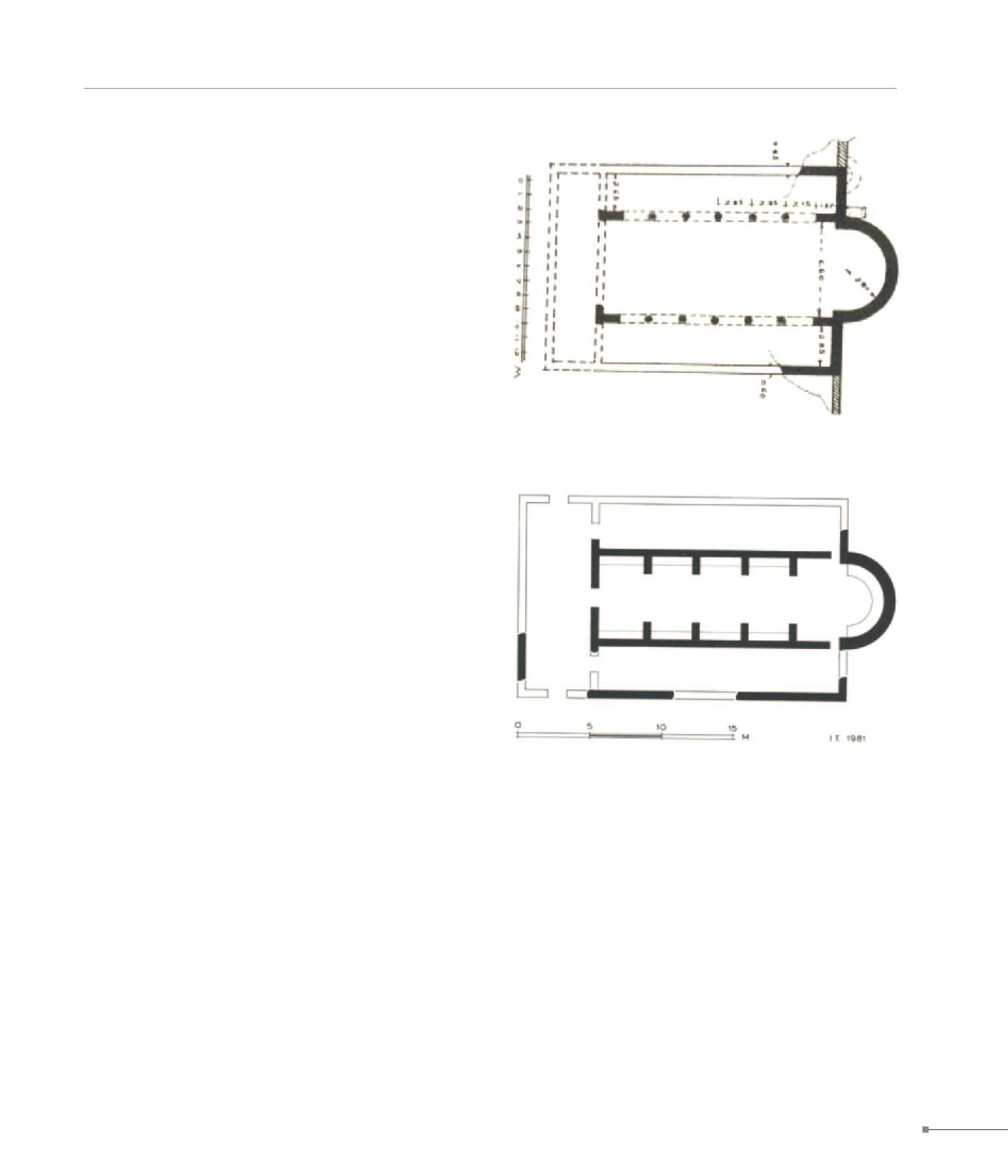
Kalyvia.
Lavrio.
CENTRAL GREECE
193
249. Porto Rafti, basilica, ground plan (Πόρτο Ράφτη, κάτοψη βασιλικής)
247. Kalyvia, Taxiarchs, ground plan (Καλύβια, Ταξιάρχες, κάτοψη)
247.
Kalyvia.
At Kalyvia, an area rich in Christian monuments, the church of
the Taxiarchs is distinctive. A three-aisled basilica of the 5th-6th
c., it was reconstructed within the limits of the nave, after a pe-
riod of abandonment. This second phase dates from the 13th
c., as indicated by the initial wall-paintings’ layer dating back
to that period; the built altar screen with the unusual shrine are
probably contemporary. Saint Peter at the Ennea Pyrgoi site
is a cross-in-square church built in the 12th c. with the narthex
communicating with the nave through a tribelon. The significant
wall decoration, dated to 1232 as attested by an inscription,
features a portrayal of the scholar Michael Choniates, last Met-
ropolitan of Athens before the Frankish conquest. At a short dis-
tance from Saint Peter is Panagia Mesosporitissa, a contracted
cross-in-square church with Athenian dome and later chapel
in the N, dates from the late 12th-early 13th c. Saint George at
Kouvaras is a church with building phases dating from the Early
Christian to the Mid-Byzantine periods, and wall-paintings of
various periods, with the Second Coming (13th c.) on the upper
part of the built altar screen the most significant. A rare example
of a twin-naved, double-apsed church is the ruined Saint John,
which has been excavated at the Gouri Bim site dating from the
Late Byzantine period.
248.
Keratea.
The small, aisleless, barrel-vaulted church of Aghia Kyriake pre-
serves in good condition its wall decoration, which dates from
1197-8, as indicated by inscription. At Aghioi Theodoroi, Peta,
an aisleless, barrel-vaulted church with later additions, parts
of wall-paintings from the late 12th-early 13th c. have been re-
vealed.
249.
Porto Rafti.
At the Drivlia site, on the Gulf of Porto Rafti, a three-aisled funer-
ary basilica with at least three building phases has been exca-
vated, as well as an extensive cemetery nearby in use in 4th-6th
c., as indicated by grave goods. In the same area remains of a
bath complex (4th-5th c.) and of houses, as well as coin hoards,
have been detected, attesting to a prosperous Early Christian
settlement. At the Monastiraki site, ruins of a cross-in-square
church have been discovered.
250.
Lavrio.
The port at Lavrio continued to be inhabited in the Early Chris-
tian period, when it is indicated that the silver mines possibly
reopened in a restricted area. On Nikolis hill an Early Christian
basilica has been detected, from the bema of which originates
the mosaic floor, possibly dating to the second quarter of the
5th c., exhibited nowadays at the Lavrio Archaeological Muse-
um. Early Christian graves have also been discovered locally,
as well as residential property (Palaia Fokaia, Pousipelia, etc.).
Numismatic finds attest to some activity in the Byzantine years.


